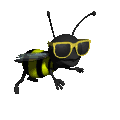
A wind turbine is used to harness the kinetic energy of vast amounts of wind, and transform it into electricity. This can be shown with a very simple calculation. First we need to remember that wind is an air mass moving from an area of high pressure to an area of low pressure. This movement of air is kinetic energy and can be shown by the formula:
KE= 1/2 MV^2
KE= kinetic energy
M= Mass
V= Velocity
Thanks for Reading
- Read more...
- 1 comment
- 978 views

